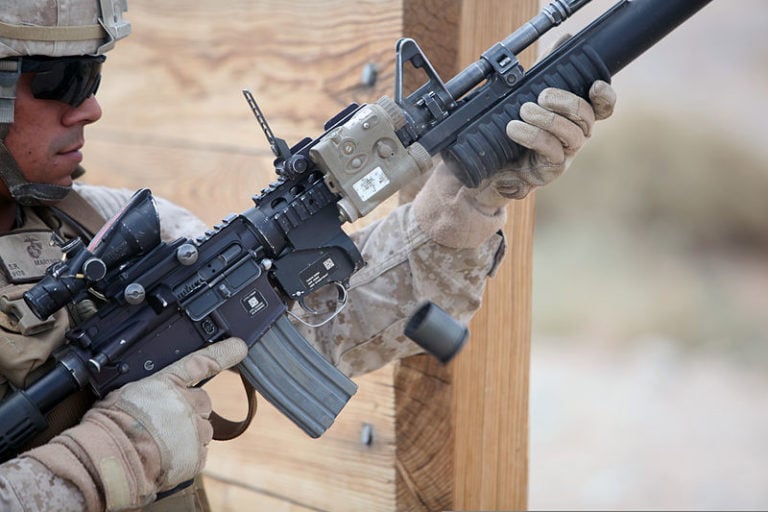

If you have ever wanted to buy a fully automatic, short-barrelled, or suppressed weapon, you have to first understand this one crucial gun law.
Published July 20, 2017Link copied to clipboard!
We review products independently. When you buy through links on our site, we may earn a commission to help support our testing. Learn more.
JUMP TO SECTION Jump To:
Trending: Ammo In-Stock, Best AR-15s, Best Concealed Carry Guns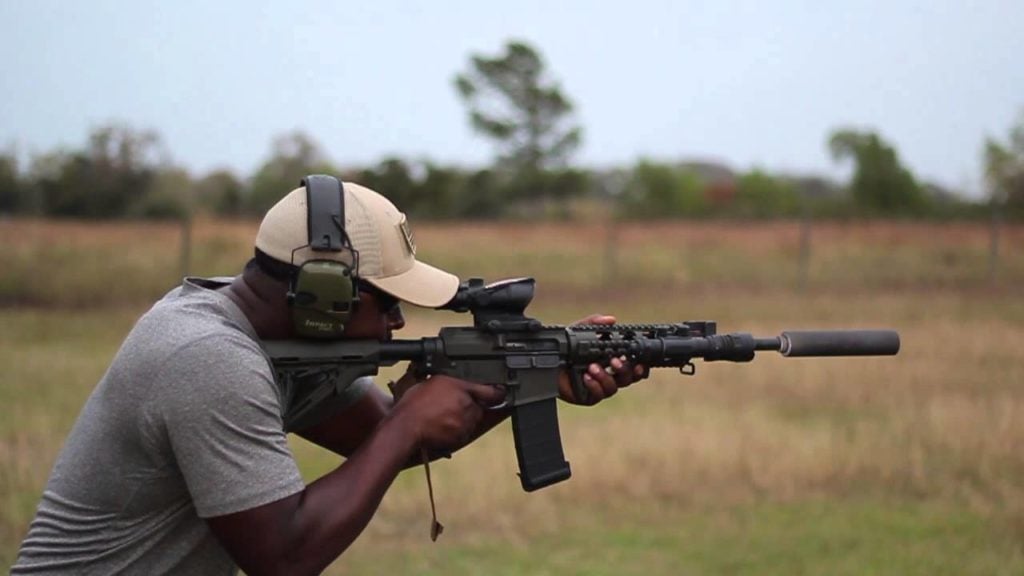
The National Firearms Act, or NFA, is a confusing part of firearms law isn’t it? I know it, you know it, everyone knows it. Luckily you have me! And luckily I have the internet, know an SOT, and happen to be going through the NFA process as we speak. Or as I type. Today we are going to try our best to explain a piece of legislature that rules the firearms industry and almost everything they do. Even if the act itself can be kinda silly at times. I’ll try to avoid diving too deep into the legislation, and the legalese. While there are always pending cases, landmark changes in legislation and ever-shifting policies I will be attempting to explain the NFA as we know it now.
So before we dive into the NFA we need to take a look at exactly why it exists. The National Firearms Act dates back to June 1934. The nation was in the middle of the great depression and dust bowl…bank robbers, bootleggers and gangsters were the talk of the town. While it’s easy to look back and assume that the hysteria was real it was vastly overblown by an overdramatic media. The gangsters of the era used a wide variety of weapons including machine guns, shotguns, handguns, semi automatic rifles, and more. Machine guns like the Thompson SMG and BAR were used by the most famous bank robbers like Bonnie and Clyde and John Dillinger. However, they weren’t common with your average criminal. They were too expensive, and they were often too big and heavy for most criminals. The legislature knew they could not outright ban the weapons, but they could apply stringent means of ownership. This included a registration scheme, a tax, and a buttload of paperwork to deal with. This effectively made these weapons inaccessible to anyone but the rich and connected. At the time the 200 dollar tax stamp was outright ridiculous, and equivalent to about 3,500 dollars today. In the midst of the depression this would effectively make it impossible to own for a normal person. Luckily, the 200 dollar tax stamp remained the same, making it relatively affordable for people today. So what weapons fell under regulation of the NFA?
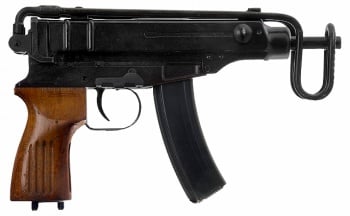
Machine guns, as defined by the ATF are weapons that fire more than one round per pull of the trigger. This includes burst fire weapons as well. This also includes devices that can be used to convert a gun to fully automatic. This devices are regulated and treated like just like a standard machine gun. The most common of these devices being something like the lightning link. Semi automatic open bolt weapons like some early Mac pistols are also regulated under the NFA if they were produced after 1982 . The ATF and the NFA don’t make a whole lot of sense sometimes, in fact they once basically stated that shoestrings were machine guns.
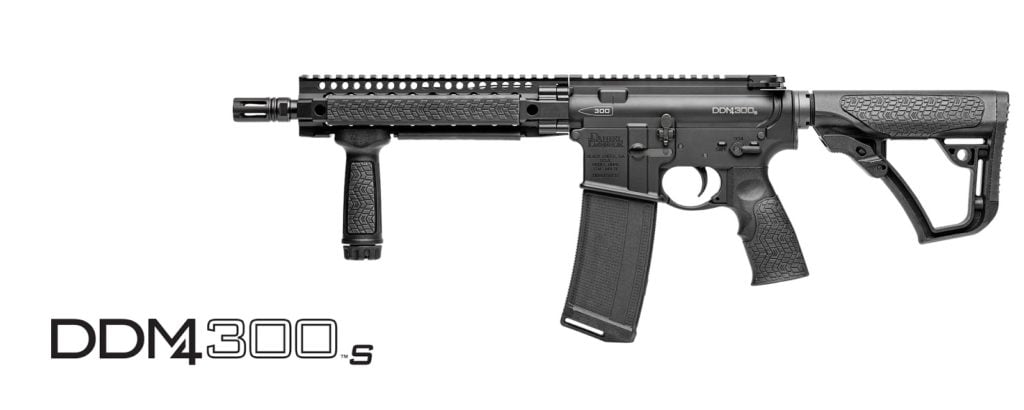
So the law states a rifle is a weapon designed to fire a projectile through a rifled barrel with the use of a stock. The NFA regulated rifles with barrels shorter than 16 inches. Any rifle sporting a barrel shorter than 16 inches is a short barrelled rifle. Make sense? A short barreled rifle, or SBR, is a handy little weapon to have. Since the definition never mentioned calibers, or really any configuration besides a stock and barrel length we can own rifle caliber pistols. AR, AK, and even FAL pistol exist as pistols and not rifles.
A shotgun is defined as a smooth bore weapon with stock designed to fire shot. Shotguns in the United States have to have barrels at least 18 inches in length. Any shotgun with a barrel less than 18 inches is a short barreled shotgun. Some shotguns are also destructive devices, which we’ll cover later. Because a shotgun is defined as having a stock, or being redesigned to have a stock, certain weapons are not considered shotguns and not bound to barrel length. For example the Mossberg 590 Shockwave ($449.00) is a 12 gauge firearm because it has never had a stock. It’s also longer than 26 inches in length so it’s not an AOW. Trust me I know it sounds weird, but I’ll try to ensure it makes sense. Check out our 590 Shockwave Review, if you want to learn more.
Silencers, suppressors, can, mufflers, or whatever else you want to call them are also treated as NFA firearms. Are they firearms? No, but they’re included under the act because of reasons. Good reasons. The very best reasons. A silencer is any devices that reduces the report of a firearms and can be readily attached to a firearm. Some folks in the gun community like getting all particular about silencer vs suppressor, but the NFA and the ATF call them silencers, so I’m using their terminology since we’re talking specific legal terms and such.
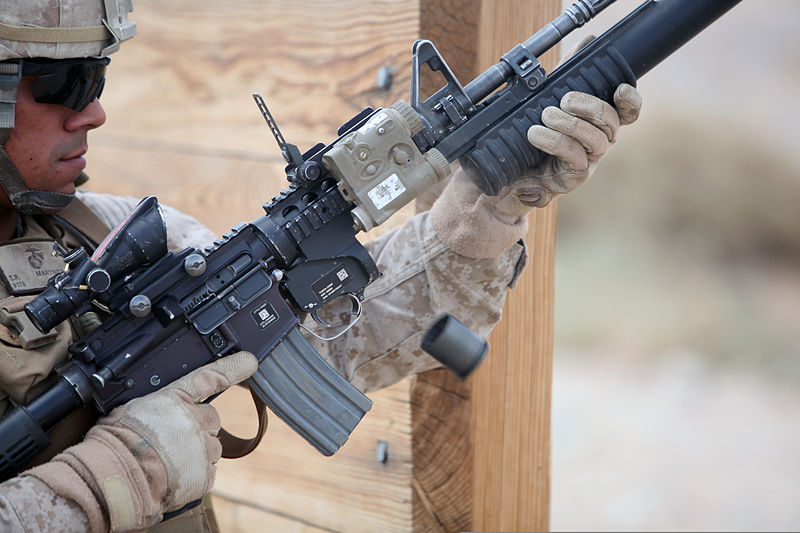
This is the funnest category in my opinion. Destructive Devices, or DDs, are weapons with a bore over .50, except for most shotguns. This also covers explosives, mortars, missiles, poison gases, grenade launches and other destructive elements. Some shotguns lose their exemption as shotguns and become destructive devices. This is usually based around the idea they have no sporting purpose. The only two shotguns that have made this category I know of are the Street Sweeper and the AA-12.
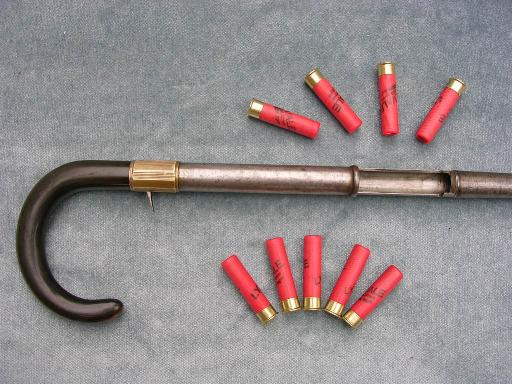
Any other Weapons, or AOWs, is a crapshoot category of weird, odd, and cool weapons. This includes 12 gauge firearms with an overall length less than 26 inches. There are also guns that don’t look like guns like cane guns, some pen guns, and other disguised firearms. Oddly enough handguns with forward grips are considered AOWs. So if you attach a vertical foregrip to a Glock’s rail that is an NFA weapon. This is due to the crazy definition of pistols that states they are supposed to be used with one hand. Fortunately, AOW’s have only a five dollar tax stamp when transferring.
For some time the foreign market was as a small contributor to the NFA. There were lots of foreign made machine guns, especially WW2 sub guns coming in pretty cheap. Often the 200 dollar tax stamp cost more than the guns. Then along comes the Gun Control Act of 1968. The GSA as it’s commonly called was some very sweeping legislation that affected the NFA substantially. The biggest change was prohibiting the import of NFA firearms. The Sporting clause was implemented and that’s why today we can’t import Glock brand suppressors, or factory CZ Scorpion SBRs. L uckily we can import CZ Scorpions as pistols and convert them to SBRs, and the do the same with AK pistols, and other foreign imported weapons.
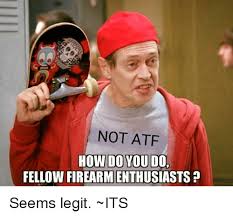
So before you purchase an NFA item there are a few things you need to know. First none of this constitutes legal advice, and you should verify all the information I provide. Second know your state’s laws. Some states regulates NFA items or outright prohibits their possession in certain states. So verify your state’s laws before you dive headifrst into the NFA Market.
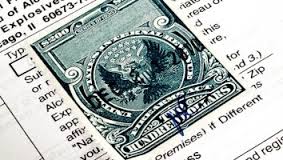
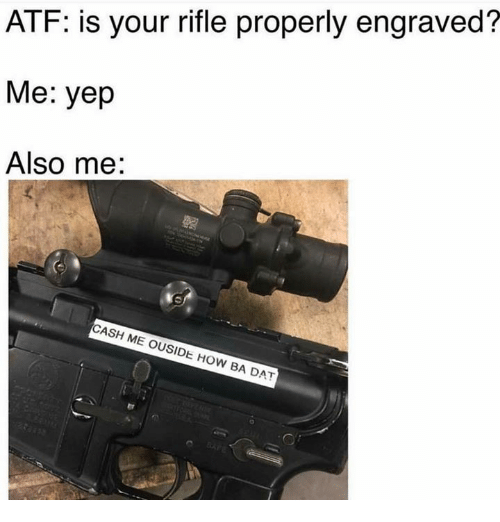
Form 1 is the fun one, it’s needed when you want to manufacture an NFA item. Now most of you are likely saying, well I’m not going to manufacture an NFA item. However, you need to know what the ATF means when they say manufacture a weapon. This isn’t you breaking out the CNC machine and creating a brand new gun. Let’s say you purchase an AR 15 pistol and want to turn it into a short barreled rifle. All you really need to do is attach a stock and buffer tube. However, in the eyes of the ATF you are manufacturing a new gun. It’s crazy right? Well, that’s just how it is. Here’s a link to the PDF variant of the ATF Form 1, there is quite a lot of slots to fill out, but it’s somewhat self-explanatory. You’ll also have to engrave a serial number onto the weapon and either your trust name, or a last name. It has to also follow ATF guidelines for serial engravings.
The Form 4 is one of the simpler forms. A Form 4 is used when you are transferring an already manufactured NFA item. So if you walk into a gunstore, spot a suppressor you like, you’d fill out a Form 4. A Form 4 goes through an FFL/SOT and they’ll fill out certain sections and you’ll fill out the rest. It’s quite straightforward and you can take a peek at an online Form 4 to see what’s required to fill one out.
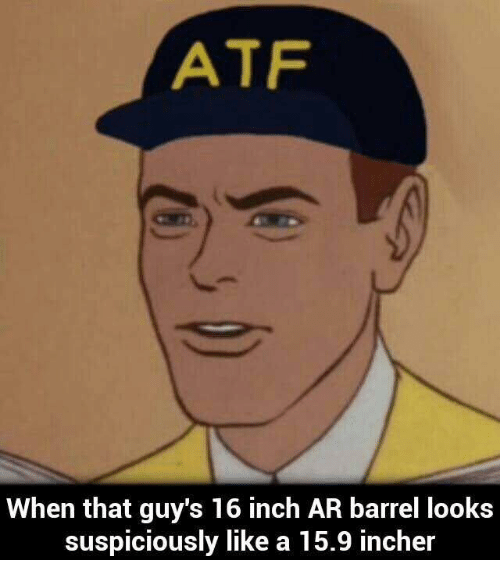
The Form 5 is used when the transfer will not be taxed. There are several situations where a tax free transfer can occur for NFA items. The most common is a transfer to an heir or beneficiary. These transfers can also occur with the transfer of government own NFA items to civilian hands. Often police forces will sell short barreled shotguns and semi automatic short barreled rifles that can legally be transferred to citizens. Recently a few police departments have sold some Thompsons from the prohibition era to fund the purchase of modern AR 15s. For a full list, and a look at the Form 5 check it out here.
So when it comes to traveling with NFA items you need to be observant about a few things. First and foremost to cross state lines with an NFA weapon you’ll need to notify the ATF via written form. They’ll approve and return the form and you are good to go. You can also get approved for a date range. So If you are traveling back and forth to a location for say a month, you can apply to travel for that month and be approved. The only item that is exempt from this is suppressors. You also need to make sure the state you are in allows the NFA weapon. Just because the Federal government says it’s okay doesn’t mean a state government is cool with it. Now the firearms owners protection act does make it okay to pass through states for the purpose of travel, but YMMV.
These days, weapons like SBRs, suppressors, and even AOWs are more popular than ever before. This has created a lot of support for revoking, modifying, and removing items from the NFA. Bills like the Hearing Protection act are actually attempting to deregulate suppressors and remove them from the NFA. Will these bills pass? Maybe, maybe not, but if you want to see them succeed certainly contact your legislature. The National Firearms Act is an ancient piece of legislature, but one that certainly affects our lives. I’d love to know what our readers think, and what their experience with the NFA is. Where do you stand on bills like the Hearing Protection Act? We’d love to know.